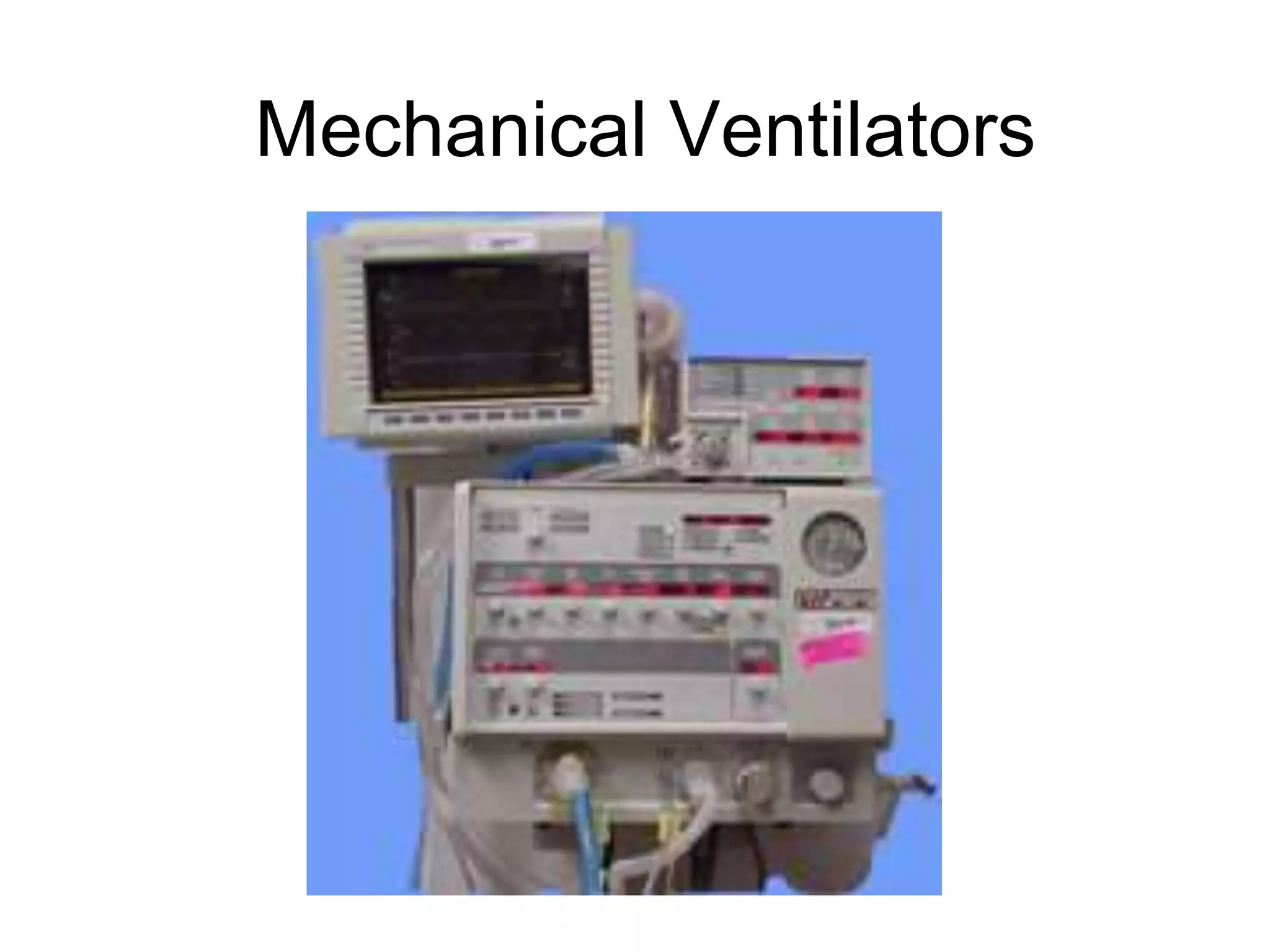The document discusses mechanical ventilation, including definitions, types, indications, settings, complications, and nursing management. Mechanical ventilation is a method of positive or negative pressure breathing assistance used when patients cannot maintain adequate oxygen or carbon dioxide levels on their own. The major types are negative pressure ventilation and positive pressure ventilation. Settings control factors like respiratory rate, tidal volume, oxygen concentration, and PEEP. Complications can include hypotension, pneumonia, and increased intracranial pressure. Nurses monitor patients, ventilator settings and alarms, and prevent complications like infection through interventions such as oral care.



















































